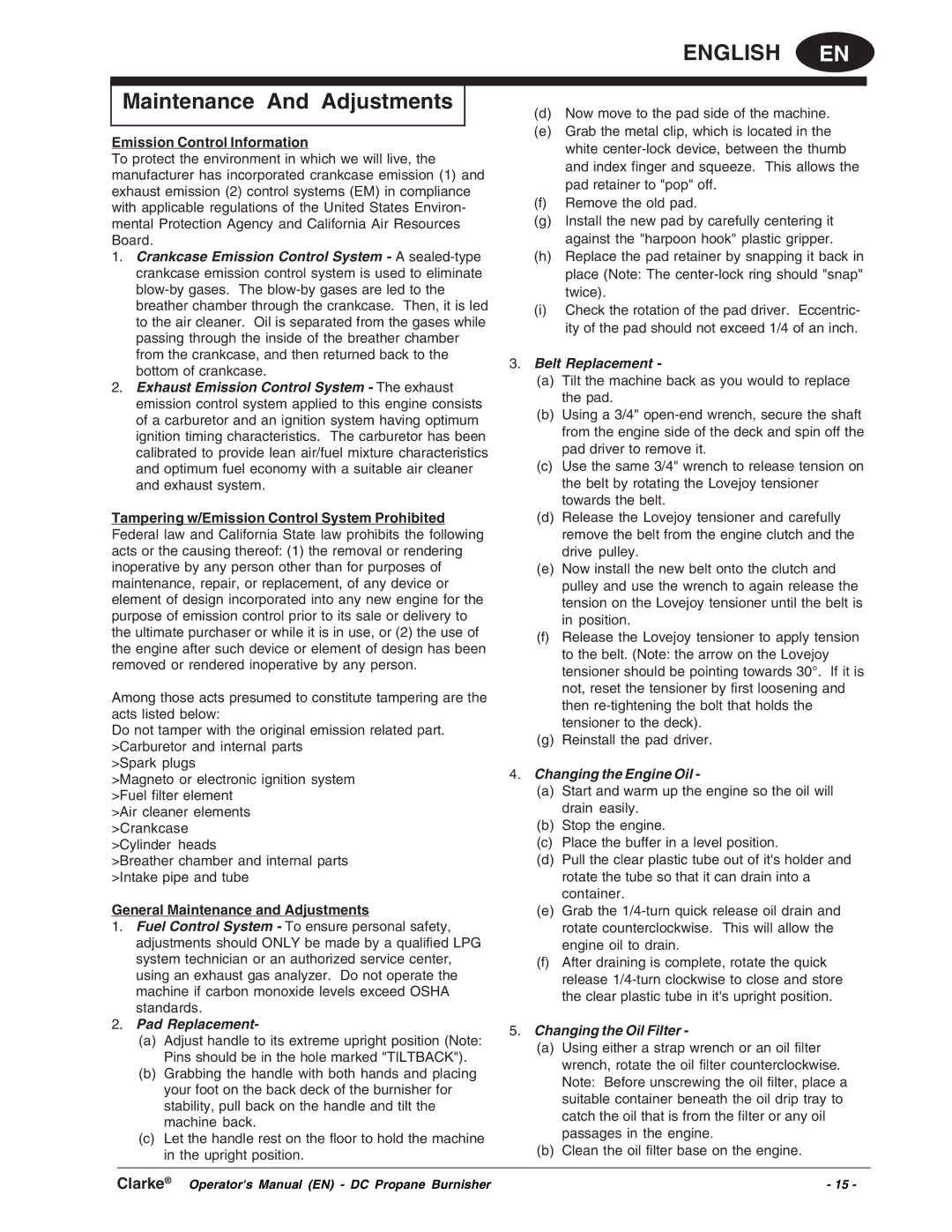Propane Floor Burnisher specifications
The Clarke Propane Floor Burnisher is an industry-leading machine designed for cleaning and maintaining various types of flooring surfaces, making it an essential tool for commercial cleaning operations. Renowned for its exceptional performance, reliability, and ease of use, this floor burnisher has become a preferred choice among facility managers and cleaning professionals.One of the standout features of the Clarke Propane Floor Burnisher is its powerful propane engine, which ensures a consistent and efficient burnishing process. This engine provides the necessary torque to maintain high speeds, enabling users to achieve a pristine finish on a variety of hard floor surfaces, including vinyl, hardwood, and concrete. The burnisher is engineered with a low-emission, environmentally-friendly propane system, reducing its carbon footprint while delivering outstanding results.
Another key characteristic of the Clarke Propane Burnisher is its innovative design for user comfort and control. The machine is equipped with an ergonomic handle that can be adjusted to suit different operator heights, minimizing fatigue during extended use. The intuitive control panel allows for easy operation, including speed adjustments and ignition, ensuring that even novice operators can achieve professional-quality results.
The burnisher features a heavy-duty construction, designed to withstand the rigors of daily use in demanding environments. Its robust chassis provides stability and durability, while the large, high-quality pad assist in achieving a mirror-like shine. The burnisher also boasts a generous pad driver, allowing for compatibility with various pad types, giving users the flexibility to choose the best pad for their specific floor type and condition.
In terms of safety, the Clarke Propane Burnisher includes essential features such as an automatic shut-off mechanism that activates when the machine is in an upright position, preventing accidental operation. Additionally, the burnisher's design enhances visibility, helping operators navigate tight spaces with confidence.
Overall, the Clarke Propane Floor Burnisher is a versatile and powerful cleaning solution, combining advanced technology with practical features that enhance performance and user experience. Its unparalleled efficiency and ability to deliver impressive results make it an indispensable asset in any commercial cleaning arsenal. Whether for large facilities or smaller environments, this burnisher offers the dependability and results that cleaning professionals demand.

